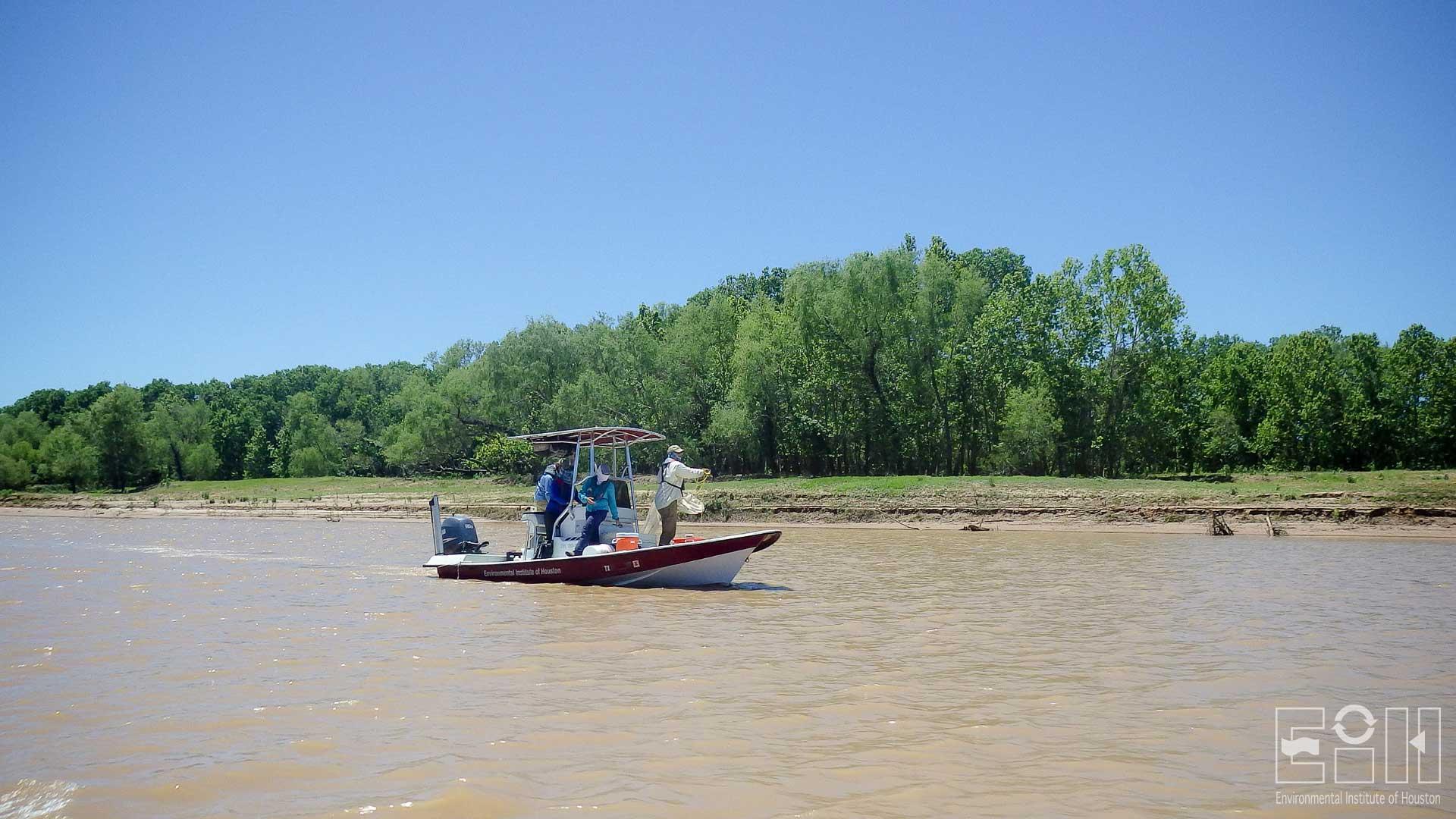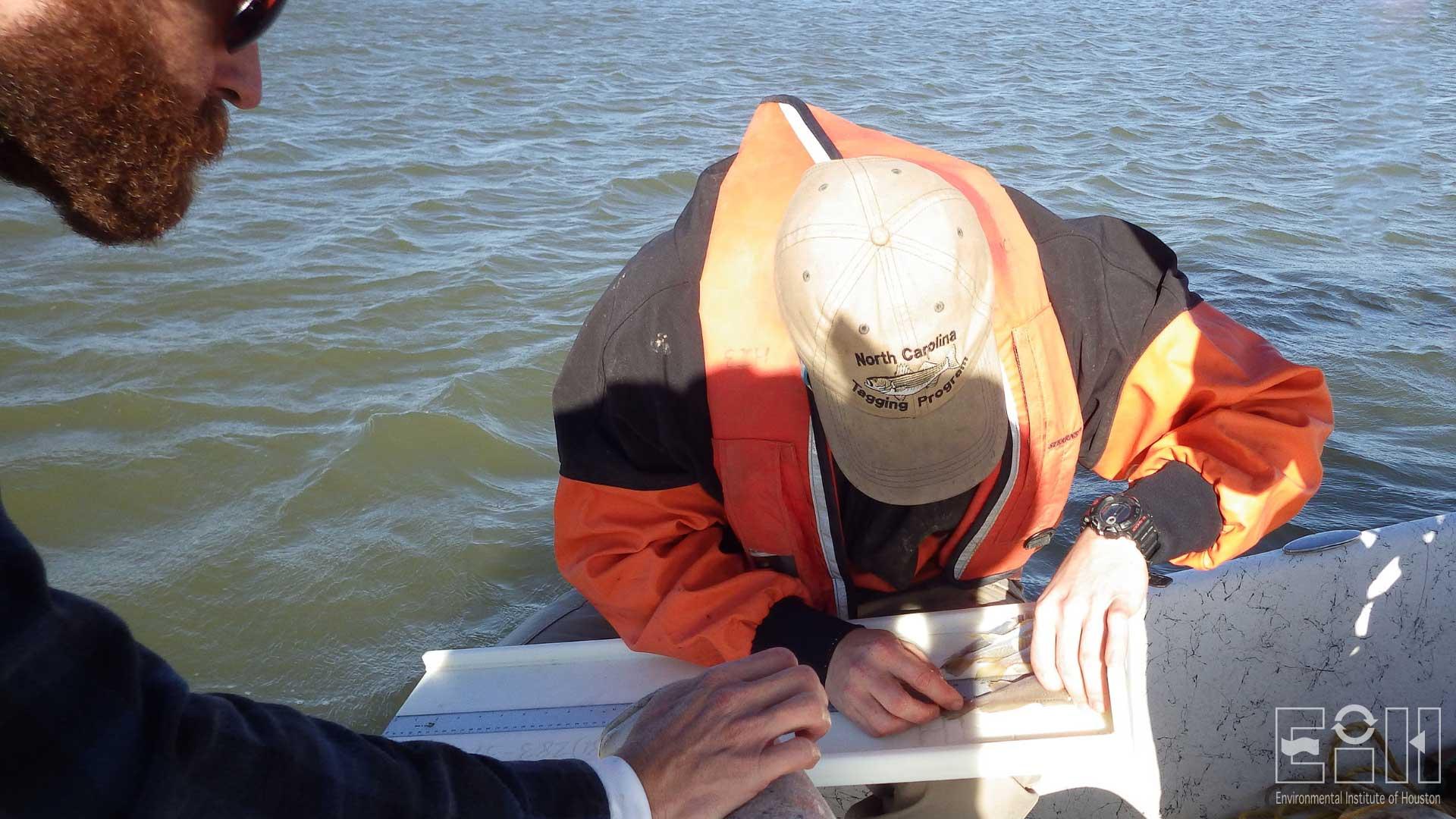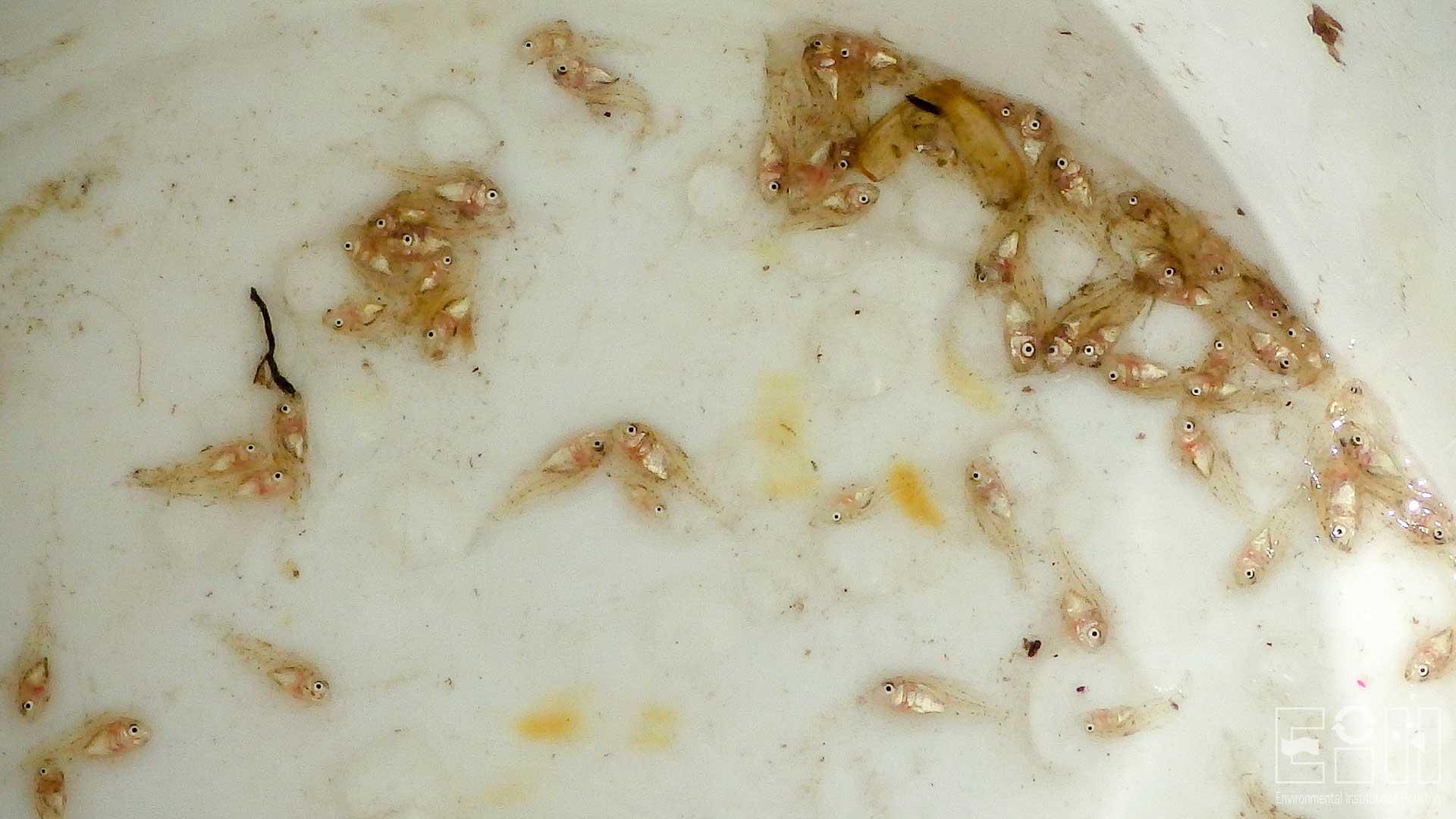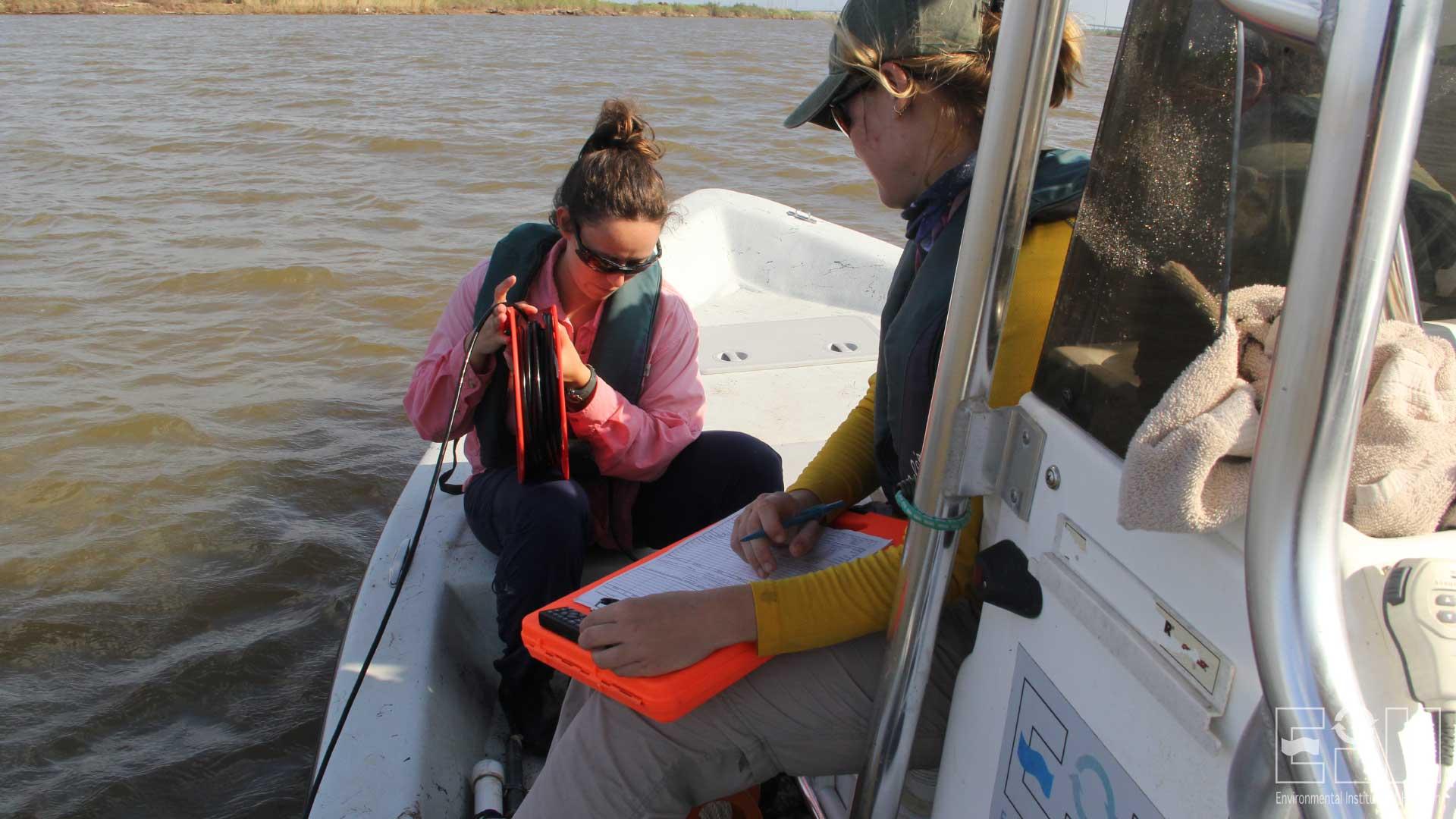
Characterization of Finfish Diet Using Stable Isotope Analysis in the Brazos River Estuary
Purpose/Objectives
The major objectives of this project are 1) to determine to what extent estuarine finfish utilize the Brazos River estuary based on prey consumption and 2) what physical or biological parameters may influence the abundance, health, and distribution of fish species.
Study Area
Lower Brazos River, Brazoria County, Texas
Project Period
2016 – 2017
Description
Expanding on previous research conducted by EIH in the Brazos River Estuary near Freeport in 2012 and 2014, field sampling of flow regimes and biological monitoring were resumed in the fall of 2016. Collections to characterize instream flows include, water quality, physical parameters, and biota. Organisms of specific interest to this graduate thesis research include the young-of-year and adult estuarine finfish of various species. These fish are collected for stable isotope analysis as a method to determine the origin of prey utilized by individuals. Many of the estuarine fish inhabiting the area are believed to utilize the estuary for short periods in early development. Diet composition can be determined using data from the stable isotopes of carbon and nitrogen in the fish tissue. This project aims to determine to what extent these estuarine migrants utilize the Brazos River Estuary based on prey consumption, and what physical or biological parameters may influence the abundance, health, and distribution of fish species.
Publications and Presentations
Swanson, T. 2019. Nekton Community Characterization of the Lower Brazos River with an Emphasis on Atlantic Croaker, Micropogonias undulatus, Trophic Dynamics. University of Houston-Clear Lake, Houston.
Swanson, T., Oakley, J., and Guillen, G. 2018. Exploring impacts of physical stressors on fish diversity and abundance in the Brazos River estuary, Texas. Annual Meeting of the Texas Chapter of the American Fisheries Society, College Station, TX. Poster.
Project Sponsors
Related links
Brazos River and Associated Bay and Estuary System: Stakeholder Committee and Expert Science Team










